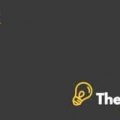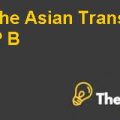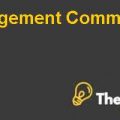
Introduction
Pakistan Elektron Limited, formed by Malik Brothers in 1956 provided support to power industry by manufacturing switch gears, transformers and electric motors in collaboration AEG of Germany. In 1978, PEL was taken over by Saigol Group, which brought a vision for the company and enabled the company to start commercial manufacturing of transformers in 2011. The company acquired a technical license from Pauwell Belgium that supported the manufacturing of these new generation transformers and also provided support to its engineers in the starting period. This development helped PEL to compete internationally and provided an opportunity to innovate and become cost effective. Power has been a market leader since then and has been many renowned brands under their belt. In 2007 the company aimed to change its information system as the system working and developed under the visual FoxPro platform were obsolete, and the company wanted to adopt change. The tier 1ERP system was chosen in order to strengthen the manufacturing. The procedure for implementation of the system was outsourced, but after the implementation of phase 1 the company was under liquidity crisis. The company responsible for the implementation of an ERP system was removed from the project as the staff was not comfortable with it and had trouble understanding it and was in favor of the existing methods used in the company.
Problem Statement
PEL adopted the ERP method, but the completion of phase 1 saw a company in crisis regarding finances and was lacking insufficient knowledge regarding the system. The company’s staff was not comfortable with the project and was having difficulty adopting the change, but the company had to adopt the change to eradicate the issues concerning project management and human resource. The ERP systems are risky to adopt and are costly as well that is why the company saw issues in the early stages of adoption.
Analysis
The PEL is a leading manufacturer and distributor of electronic appliances in Pakistan. The company’s SWOT analysis is given below.
1. SWOT
Strengths
The company’s strengths are vivid. PEL has the advantage of the early movement and is second largest in the appliances division in Pakistan and pioneer in supplying power appliances in the industry. The company’s appliances division has the facility to make to order developments which further strengthen the division. The adoption of ERP system has further increased its strengths. The brand name is itself is a strength that gives the company a high percentage of brand equity and has the largest dealer network in Pakistan. Strategic partnership with LG was also a major strength for the company.
Weakness
PEL has many systems that were in use, and there was no integrated system. The adaptation of ERP was risky as the company had no facilities regarding user training, and the staff was having difficulty in accepting the system. Besides that the ERP system was costly to implement, and the company lacked the budget for complete implementation. The systems already in use were outdated. The change saw an increase in the turnover ratio and the new hired were asking high salary.
Opportunities
The ERP system provides companies with various opportunities as the private sector is expanding so the company can also expand its market. A company can also adopt the method of corporate governance and can easily streamline the reporting among departments. With the change, the company can increase its production capacity and continually evolve and using innovation can increase their product range.
Threats
Threats designed for the company include the basic and very prominent is from competitors who can adopt the change and can take the first mover advantage. Secondly the company lacks funds to support the change and in such case the idea of adopting the ERP system will result in budget deficits. On another major threat is the government regulations on the power generation sector, which will affect the power division of the company.
2. Evaluation of the Method
The ERP project was designed to be completed in three phases within two years as proposed by the A.F Fergusen. The first phase subjected to dealing with all the functions related to accounting, order management, inventory management, procurement and planning modules. The company provided all the information regarding the systems and procedures of the company to the AFF on the basis of which the AFF representatives prepared a functional design document. The document then converted into a manual that provided support in revising the methods under Oracle eBusiness suite, or ERP tier 1 which had four components purchased by PEL which were, discrete manufacturing, flow....................................
This is just a sample partial case solution. Please place the order on the website to order your own originally done case solution













